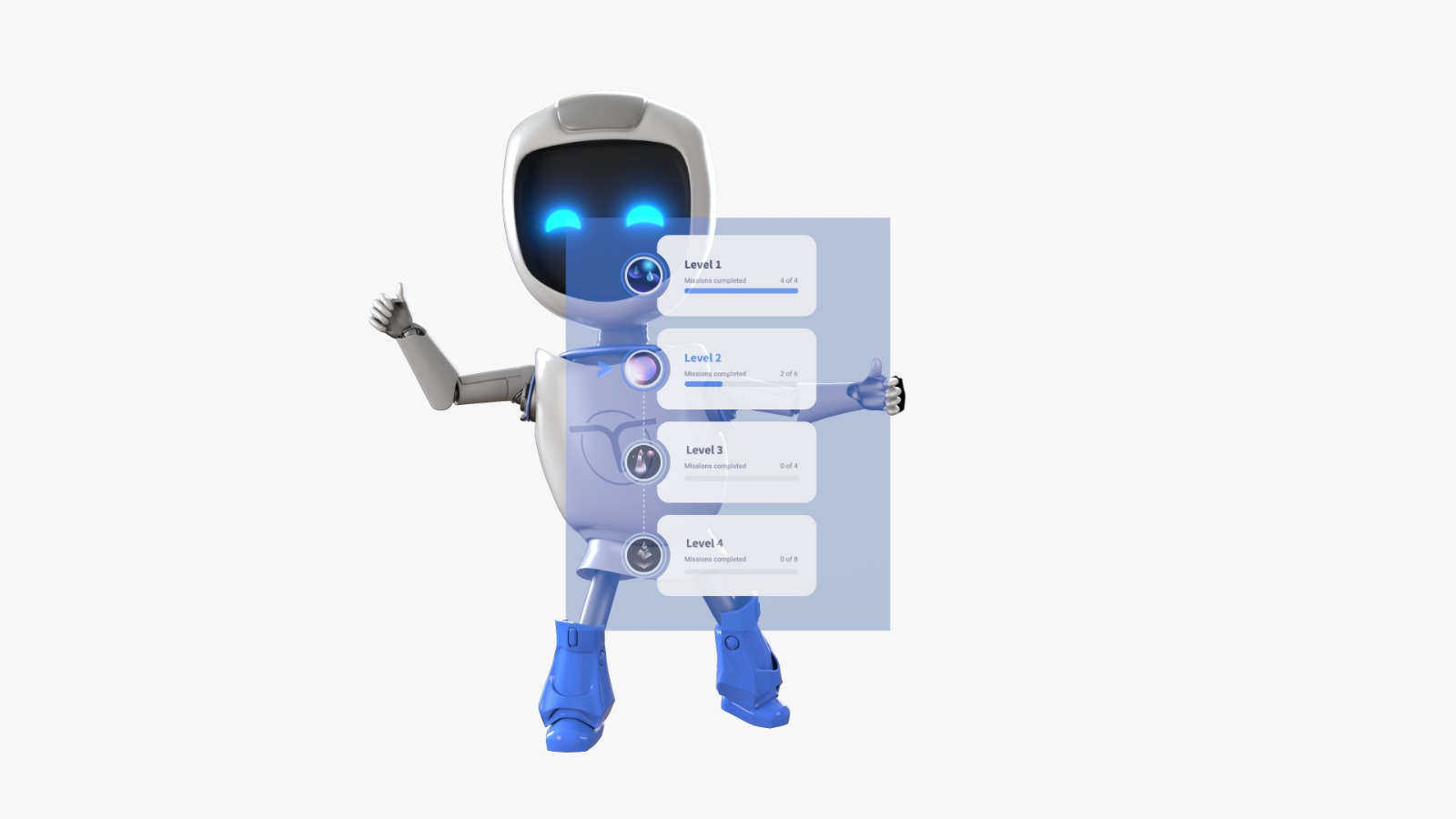Modern-day learners want to access everything at their fingertips. In a digital world where handheld devices, rocket fast internet, and e-learning dominate, microlearning has emerged as a lifesaver for trainers. Adopting a microlearning approach to learning and development can help you deliver effective training sessions, that too in a time and cost-efficient manner.
According to a presentation at the International Conference on Applied Science and Engineering Innovation, 71% of the learners preferred microlearning videos because they allowed in-depth learning and expanded their horizons. Moreover, convenience-seeking smartphone users complete courses 45% faster on average at different non-office locations.
Microlearning gives learners the freedom to choose and leverage assets that suit their needs best on any digital device. This makes the training much more useful, engaging, and efficient. Almost all microlearning platforms support learning across devices and languages. However, when choosing a microlearning platform for your business, you must ensure that it offers the features that aren’t so common.
Your Checklist for Choosing a Microlearning Platform
Below are the top 5 factors you need to consider when choosing a microlearning platform for your organization.
Access to Progress Tracking and Analytics
The best microlearning platforms offer access to progress reports and analytics to both administrators and users. This ensures that both parties stay on top of the learning intervention’s impact and can easily go over the performance metrics at any given time. You, as well as the learners, will know which direction you are headed and if there are any distractions or obstacles on the path to success. This means you can act proactively and tweak the content of your training if need be.
Highly Engaging Learning Journey
Microlearning programs are supposed to engage the learners not just by offering bite-sized, easily digestible learning material but also with the help of advanced tools and design elements. The right microlearning platform will ensure optimal engagement throughout the learning journey by making the most of notifications, a wide variety of task to solve, like: questions, stories, ideas, video proofs, image proofs, quizz, surveys, point of view etc. Here is how Coca-Cola used our microlearning platform, Code of Talent, to increase sales organization agility and maximize the learning process.
Training in DIY Format
No matter which department you want to design a training for, you can safely assume that the learners want to control the learning experience. Hence, the do-it-yourself format of training is always a winner.
Besides making the learning journey more exciting and engaging for the learners, this approach allows you to distribute tasks and scale-up. The learners will feel empowered, and their confidence level will improve. On top of that, they will feel responsible and accountable for their actions and ideas, and ultimately, their productivity level will rise.
So, make sure you have the option of designing a training course in a DIY format before choosing a microlearning platform.
Easy Integration across Devices, Languages, and Systems
Great microlearning platforms can accommodate multiple languages and devices. They also allow smooth integration for multi-systems.
Social Learning
When choosing a microlearning platform, try to look for one that provides a collaborative learning experience. No one knows the ins and outs of your business processes, culture, and systems better than your employees. Therefore, you must consider leveraging their expertise and encourage them to learn best practices, proven tips, and valuable feedback from one another.
This social or peer-to-peer learning approach makes your employees feel valued, thereby boosting their motivation and productivity levels. Moreover, by allowing learners to control their learning, you can help the team grow and replicate what works best for your business.
3 Secrets You Should Know When Choosing a Microlearning Platform
Choosing a microlearning platform for your business can be overwhelming, especially if you do not know what to look for and avoid.
Here are a few things you should be aware of when making a decision.
1. Needs and Expectations of the Company vs. the Learners
Management of any company is expected to keep valuable and sensitive information secure and away from prying eyes. They are responsible for tracking the training course’s attendance and completion while keeping the content organized and stored in a safe place. Streamlining the process refers to standardizing the training materials and having as few systems and repositories as possible.
A company’s management wants a single system for storing content and tracking the learners’ progress in a nutshell. Ideally, that system should also have a firewall at the front with more login requirements to keep all the information secure.
Now, these needs and expectations of the company and the system that fulfills them do not benefit the learners. They limit the value that microlearning can offer to the learners. Thus, make sure that you’re aware of the needs and expectations of both your company and the learners before choosing a microlearning platform.
2. Learners Think Their Demands are Simple and Obvious
To understand what your learners need, you must determine why they started searching for something. Streamlining the learning process seems like an easy job. However, it is much more than just conveying which type of content applies to their situation and seeing them clicking straight on it with minimal diversions.
If you see through the learners’ eyes, they are actually looking for the following aspects in the microlearning journey.
Real-time Feedback
Modern-day learners look for real-time feedback that comes as things happen on an ongoing basis. It allows them to understand the context and adapt to changing situations quickly entirely. You can achieve this by offering a learning experience assisted by a trainer or manager who provides regular input to guide the learners on where to put their focus.
Easy to Relate to
Learners do not want to waste time on content that does not resonate with them. By looking at the titles, subtitles, language, and graphics, they instantly need to know if the material is appropriate for them and their situation. So, make sure you clarify whom the content is meant for right in the beginning.
Easy to Engage on Their Device
Modern-day learners dig flexibility when it comes to microlearning. The content you prepare should be compatible with a wide range of devices so they can engage on the device of their choice. Tiny text and graphics are obviously a big no for mobile phones. The best way to go about this is by field-testing your content on all the devices and making amends if need be.
Ready-to-Use Information for Their Jobs
Microlearning usually serves as a just-in-time productivity booster and performance supporter. Thereby, learners expect the content to be in a form that fits how they use information in their jobs. The best bet would be to offer the journey through a wide range of formats like questions, stories, ideas, video proofs, image proofs, quizzes, surveys, points of view.
Apart from this, it would help if you considered the learners’ work environment before preparing the content.
3. Make Sure You’re Able to Measure the ROI of Your Microlearning Programs
The best microlearning platforms allow you to measure the ROI of your learning programs. You can improve your L&D strategy only when you are aware of your learning programs’ real impact. After all, your goal is to deliver maximum value for the learners.
Whether your preferred metrics are employee engagement and retention, increased productivity and effectiveness, or error and accident reduction, make sure the microlearning platform you choose allows hassle-free ROI measurement.
Microlearning Platforms: The Ultimate Solution for Employee Engagement Problem
It’s no secret that employee engagement is one of the biggest challenges faced by L&D professionals. Microlearning offers a variety of benefits for the organization and the learners by introducing engaging activities that traditional e-learning platforms don’t deliver. It encourages collaborative learning, where the learners can interact with the trainer or manager and their peers for accelerated learning. Moreover, real-time feedback from the trainer increases the chances of behavior change in employees.
- Gamification – Make sure the microlearning platform you choose has the concepts of gamification wired into it. Apart from being a fun activity, it allows learners to measure their skills against others. You can give a certificate or badge to boost employee participation and engagement.
- Wide variety of tasks or missions that you can design within the learning journey. For maximum relevance and business impact, internal trainers and managers should have a multitude of learning missions available to utilize when creating the digital journeys for their teams: question/ story / idea/ video proof/ image proof/ quizz / survey / point of view etc.
Final Thoughts
The bottom line is that knowing your learners and determining their needs is the key to choosing the best microlearning platform for your business. Microlearning may seem like a significant challenge initially, but it brings along a fantastic opportunity to maintain a balance between the organization’s need to streamline the learning and development process and the learners’ need to access engaging, valuable, and impactful microlearning content.
For professional assistance and support for choosing a microlearning platform, feel free to contact us right away!




